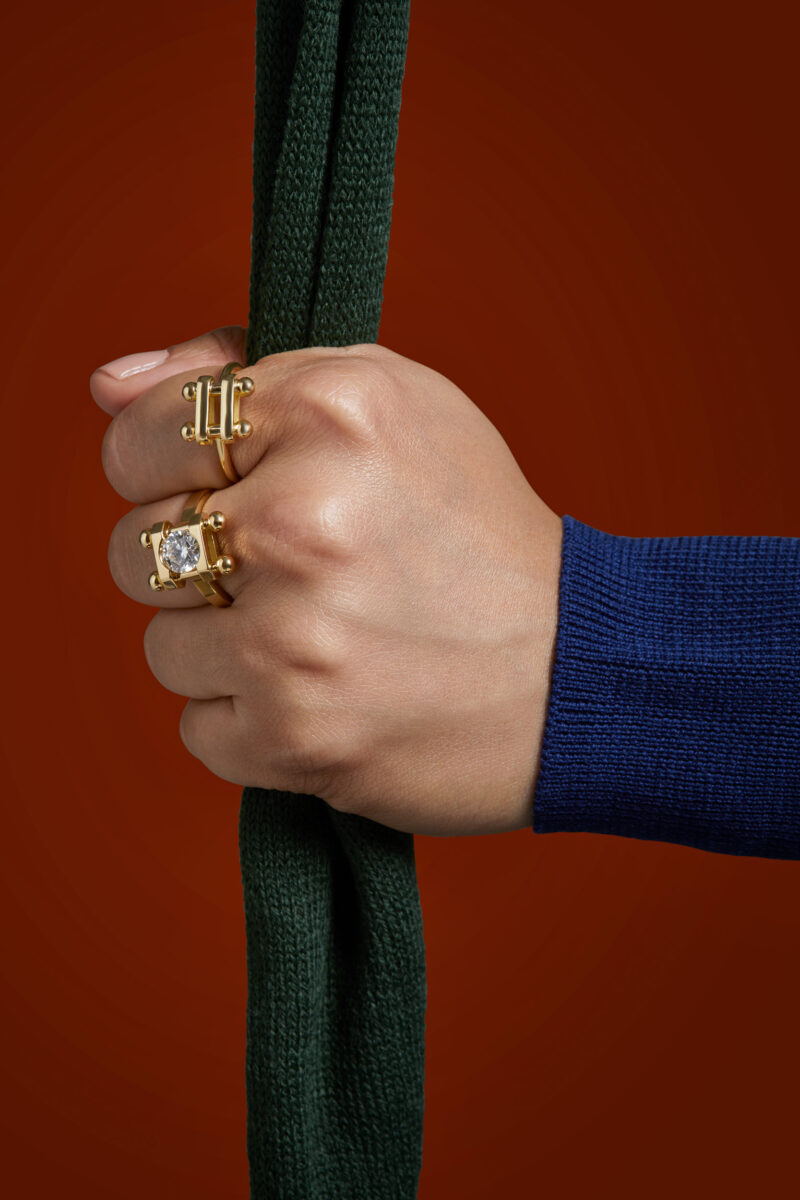Studied Minimalism
New to the jewelry scene, designer, Lia Lam, is already making waves with her minimalist creations. Venturing to Gem Geneve this week as part of the Designer Vivarium by Vivienne Becker, she is one of the most promising young jewelers to come out of 2023.
From strikingly balanced belcher rings crafted of fused platinum and 18-karat gold to harmonious necklaces inspired by music notes on sheet paper, Lia’s work is defined by her poetic use of geometric forms and symmetry. We sat down with Lia to learn her story and understand her thoughtful approach to minimalist jewelry.

Who are you?
I’m a designer who creates wearable stories and architecture.
What do you make/sell?
Memories, attitudes and emotions. They are translated into my designs via the symbolic juxtaposition of simple forms; simple forms have the power to tell evocative stories.
Where do you make/sell it?
London, United Kingdom. I have a by-appointment space only in central London. I’m not working with any galleries or stores currently, so the best way to find me is by email.

When/why did you start?
In pursuit of my lifelong dream, I started designing in 2016, self-taught, and began prototyping ideas during the pandemic, in paper, play-dough and finally, metal.
I am attracted to fine jewelry’s ‘permanent’ and three-dimensional nature – it lives on. We all use different themes to interpret the world. Jewelry and photography are the two that speak to me the most. Both of them are portable; they tell stories and are a witness of time.

When/why did you start?
Listening to people with a different point of view, lifestyle or from a different culture. This makes me reflect on the way I do things and stimulates me to challenge the status quo. Apart from that, doing origami, and sitting on a train.
Origami is nostalgic; it helps me think in a three-dimensional way and has that spatial awareness when designing. For me, jewelry shouldn’t only look interesting from one angle. ‘Every angle considered and offers a point of interest’ is one of my key design philosophies; this was inspired by my past experience as a dancer.
I was never the best dancer, but learning to enjoy something one’s not good at helped me understand a side of myself that I’ve never been in touch with and a world I have not been part of. One evening when I was performing in Sadler’s Wells in London, I observed that not everyone looked at the main dancer at the centre of the stage. Depending on where the audience is sitting in the theatre, their focus is on a different dancer. Each dancer entertains; each move is a three-dimensional consideration.

Do you ever feel bored? What do you do about it?
I have endless ideas and less time to keep my mind and hands busy.
What’s the next big jewelry trend?
I don’t believe in trends; they come and go, while jewelry doesn’t. Minimalist jewelry is about practicing the art of subtraction, not addition. More is always more, while less is not always more. To ensure less is always more – making sure each subtraction adds a point of interest and value to the design is what I really enjoy doing. It’s problem-solving, my kind of puzzle!
But I hope to see more men expressing themselves through jewelry.
What’s our industry’s biggest challenge?
As a new designer, I find intellectual property protection particularly challenging. The process, as well as the cost. In a very much globalized world, especially when it comes to trade and commerce, IP protection is still very much regional. Intellectual property is probably the most valuable asset a new designer could have, yet the financial barrier to obtaining it makes IP protection intangible for most new designers.

How do we fix it?
I wish I had a solution. Similar to hallmarking and to some degree copyrights, wouldn’t it be nice if design patents/rights can be recognized globally, via some sort of an agreement/convention?
If you could ask an industry peer one question, what would you ask and to whom would you ask it?
I’d ask diamond cutters, if they were to invent a new cut that would be named after them, how would it look?





















